RECOVER
The Making of The Philadelphia Negro
A 28 year old W.E.B. Du Bois moved to Philadelphia in 1896 to conduct a systematic investigation of the Black residents of the Seventh Ward (now Center City). The University of Pennsylvania published his findings in The Philadelphia Negro (1899) featuring Du Bois’ color-coded map of social class.
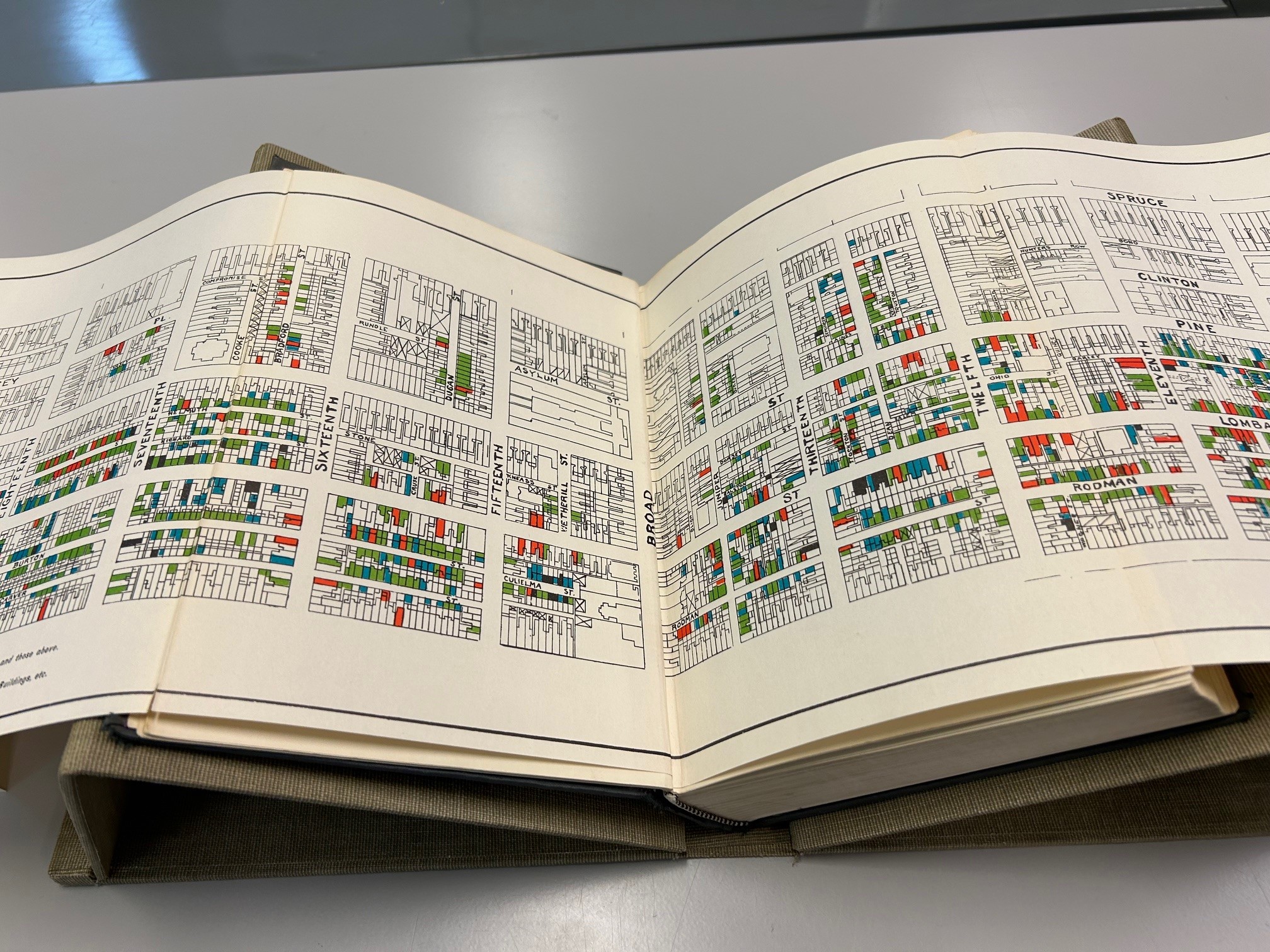
The original version of The Philadelphia Negro included a color-coded, accordion map showing the social class Du Bois assigned each of the households he visited. This copy of the book is part of the collection at the Historical Society of Pennsylvania.
The Invitation
University of Pennsylvania Provost Charles Harrison sent a telegram to a young W.E.B. Du Bois on June 8, 1896 offering him a fellowship to conduct research in Philadelphia. (Image courtesy of the UMassAmherst W.E.B. Du Bois Papers, 1803-1999.)
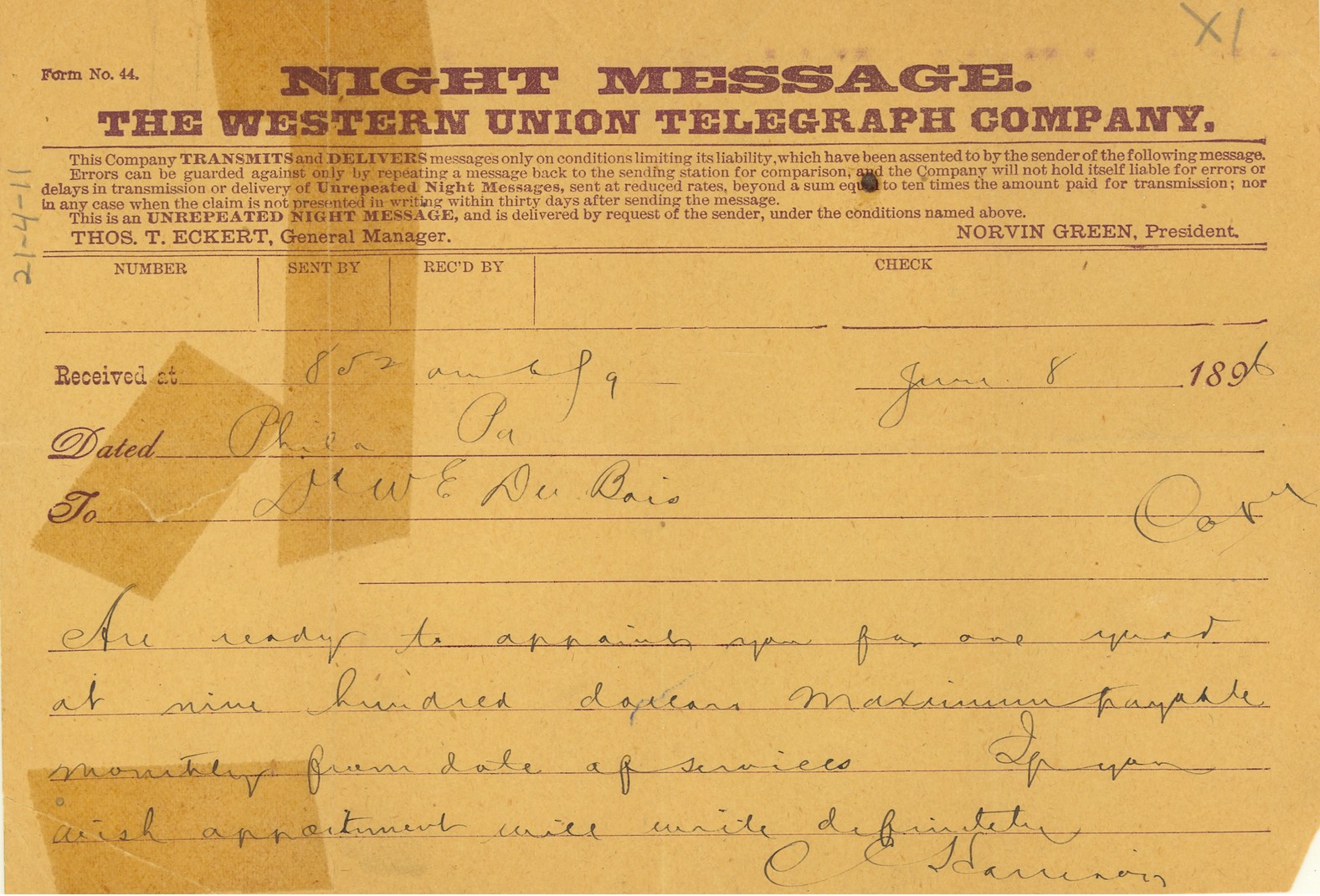
“Are ready to appoint you for one year at nine hundred dollars maximum, payable monthly, from date of service. If you wish appointment will write definitively."
Data Collection
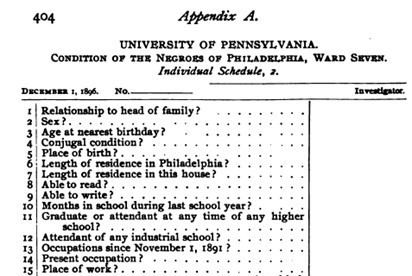
Du Bois included the specific survey questions (“interview schedule”) in the appendix of The Philadelphia Negro.
Du Bois’ research incorporated multiple methods of inquiry and analysis including archival research, extensive observation, and door-to-door surveys. He sat in the parlors, kitchens, and living rooms of 2,500 Black households listening and documenting their stories.It is likely that some of his original data has been lost.

I shall throughout this study use the term ‘Negro,” to designate all persons of Negro descent, although the appelation is to some extent illogical. I shall, moreover, capitalize the word, because I believe that eight million Americans are entitled to a capital letter.
W.E.B. Du Bois, The Philadelphia Negro, p. 1, footnote 1
Findings
Du Bois revealed Black citizens in a new light by introducing the notion of Black heterogeneity across class, space, religion, and politics. And he explained in the book’s “Final Word” that the “centre and kernel of the Negro problem” was racial discrimination. It was the duty of Whites to stop such discrimination, for their own self-interest if nothing else. Racism was dehumanizing to everyone involved.
.HjMR21fg.jpg)

Nevertheless much of the Negro problem in this city finds adequate explanation when we reflect that here is a people receiving a little lower wages than usual for the less desirable work, and compelled, in order to do that work, to live in a little less pleasant quarters than most people, and pay for them somewhat higher rents.
W.E.B. Du Bois, The Philadelphia Negro, p. 296
College Settlement Association’s Role
Although the University of Pennsylvania hired Du Bois to study the Seventh Ward, Susan Wharton and the College Settlement Association were behind the invitation. Their motivation, consistent with the goals of the Social Survey Movement, blended philanthropy, science, political advocacy, and white supremacy.
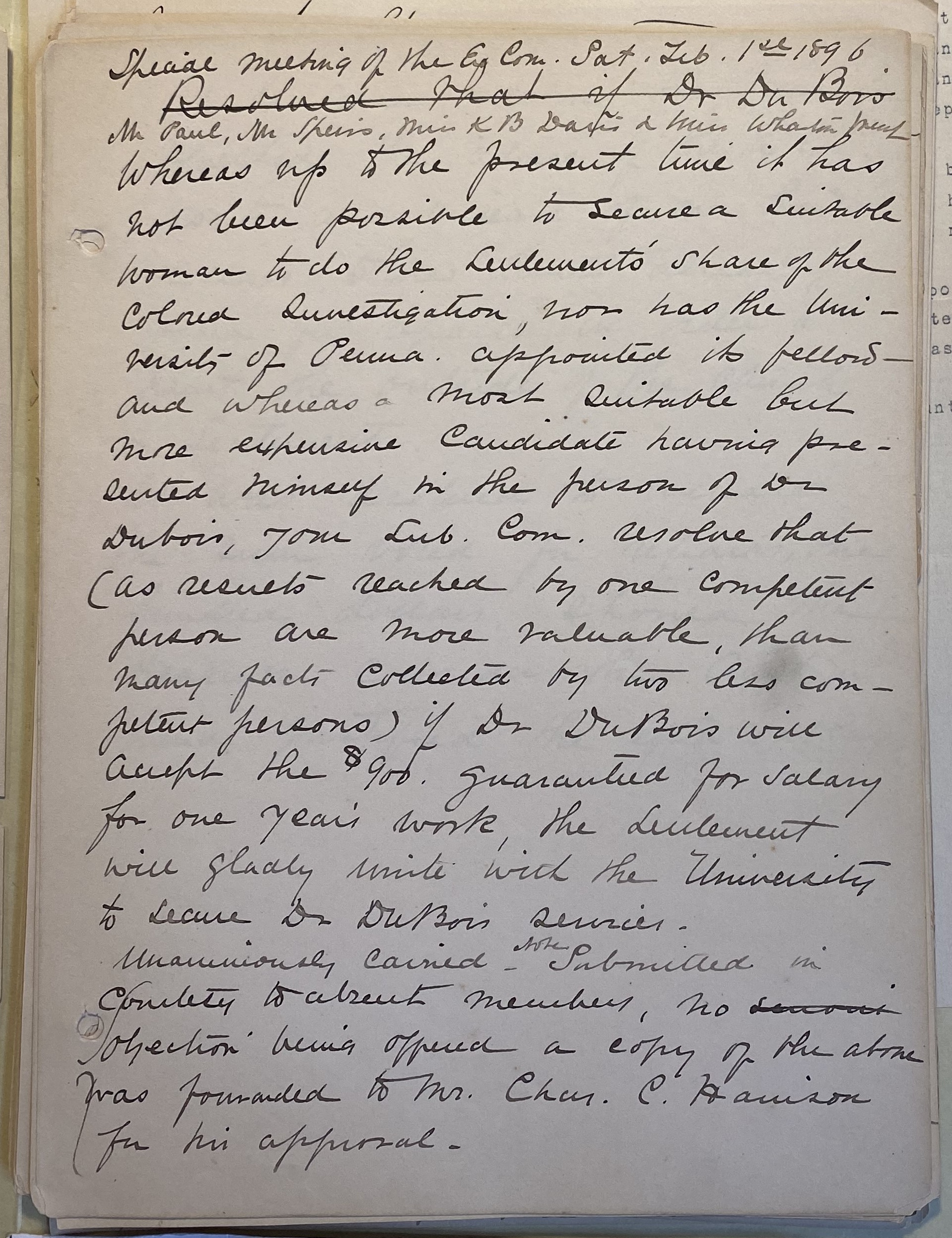
These notes from the February 1st, 1896 meeting of the Executive Committee of the College Settlement Association (CSA), describe the decision to hire Du Bois because “it has not been possible to secure a suitable woman to do the Settlement’s share of the Colored Investigation.” (Image courtesy of the Historical Society of Pennsylvania.)
Penn's Role
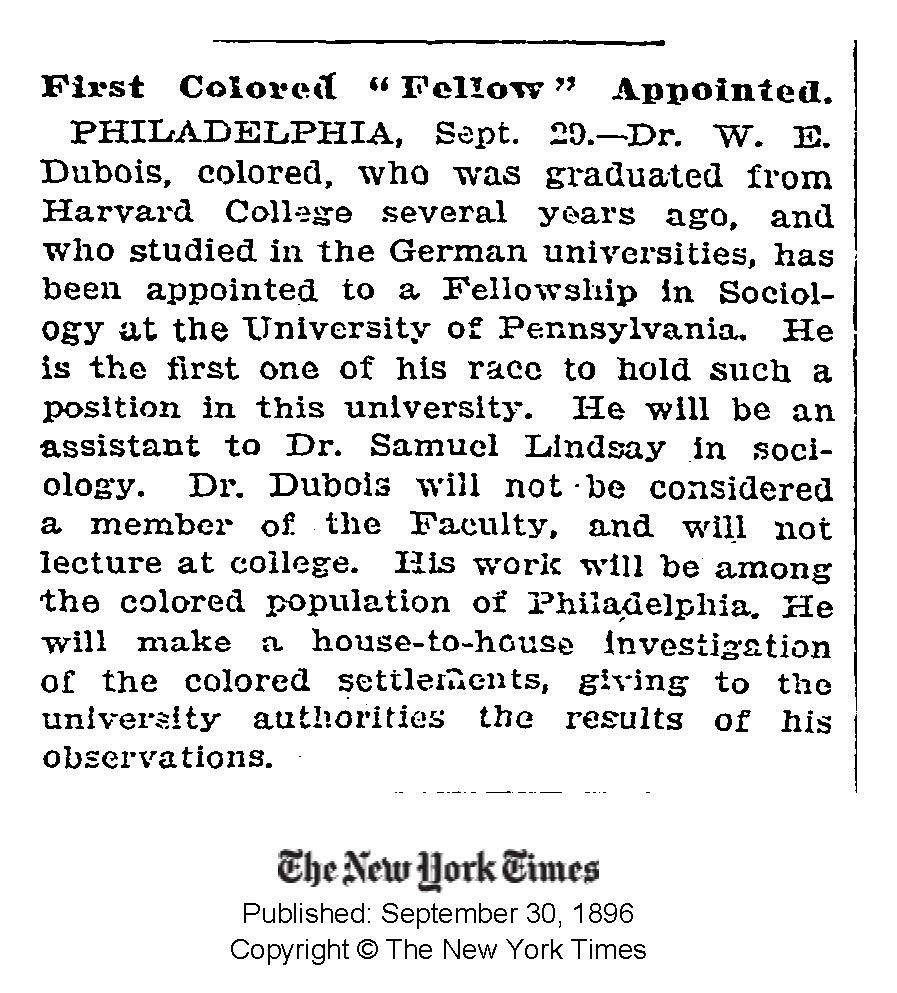
The New York Times announcing Du Bois' study
The University of Pennsylvania played only a minimal role in Du Bois’ research. Provost Charles Harrison was likely responsible for the announcement in The New York Times making it clear that, no matter how impressive Du Bois was, his role at Penn was limited to studying people of his own race and serving as an assistant to Samuel Lindsay, a White faculty member.
Du Bois' Posthumous Faculty Appointment
The Trustees of the University of Pennsylvania voted in February 2012 to posthumously bestow Du Bois with an Honorary Emeritus Professorship in Sociology and Africana Studies. Tukufu Zuberi, the Lasry Family Professor of Race Relations and then chair of the sociology department, advocated for the honorary professorship.
Du Bois “achieved the highest levels of sociological science, while presenting a case for equality and justice that was accessible to everyone,” he explained. “He was able to rise above the absurd limitations of his time. He dreamed of a world where equality and justice ruled the day. With this appointment, Penn honors his vision at a time when it attempts to address his concerns.”
The Department of Sociology and the Center for Africana Studies held a conference to honor Du Bois’ scholarly contributions to coincide with the Trustees’ decision. More than 20 scholars from across the U.S. participated, to address the questions, Who was W.E.B. Du Bois? What were his contributions to Sociology? What were his contributions to African Studies?
Perspectives
Elijah Anderson
Elijah Anderson is the Sterling Professor of Sociology and of African American Studies at Yale University. He wrote the introduction for the University of Pennsylvania Press’s 1995 and 2023 editions of The Philadelphia Negro.
Social Survey Movement
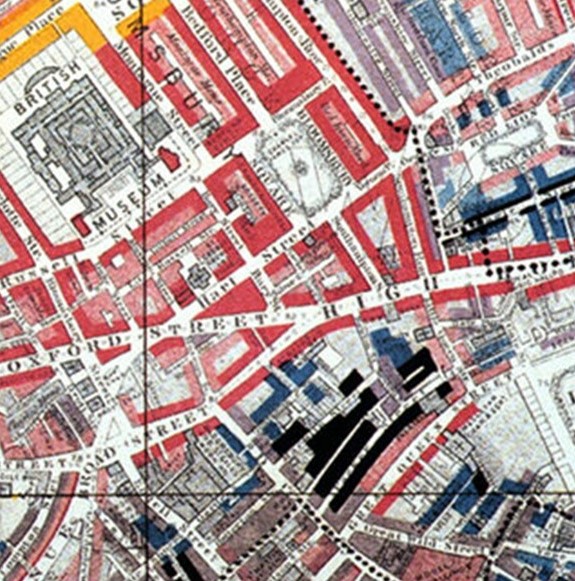
Charles Booth's poverty maps, 1889. (Image courtesy of the London School of Economics and Political Science.)
While Du Bois was the first to systematically study a Black urban population, his data collection methods and mapping were introduced by Charles Booth (Life and Labor of the People of London, 1889) and the women at Chicago’s famous Hull House Settlement (Hull House Maps and Papers, 1885).
Additional Learning
Charles Booth’s Maps from Life and Labor of the People of London (1889)Florence Kelley and the Hull-House Maps (1895) and PapersMore on Florence KelleyPaul Kellogg and the Pittsburgh Survey (1907)More on Paul KelloggMartin Bulmer, Kevin Bales, Kathryn Kish Sklar, Social Survey in Historical Perspective, 1880-1940Mary Joe Deegan, “W.E.B. Du Bois and the Women of Hull House, The American Sociologist, 19, 1988;Perspectives
Anthony Monteiro
Anthony Monteiro is a scholar and activist with expertise in W.E.B. Du Bois. He is the founder of the Saturday Free School for Philosophy and Black Liberation
